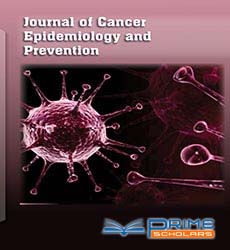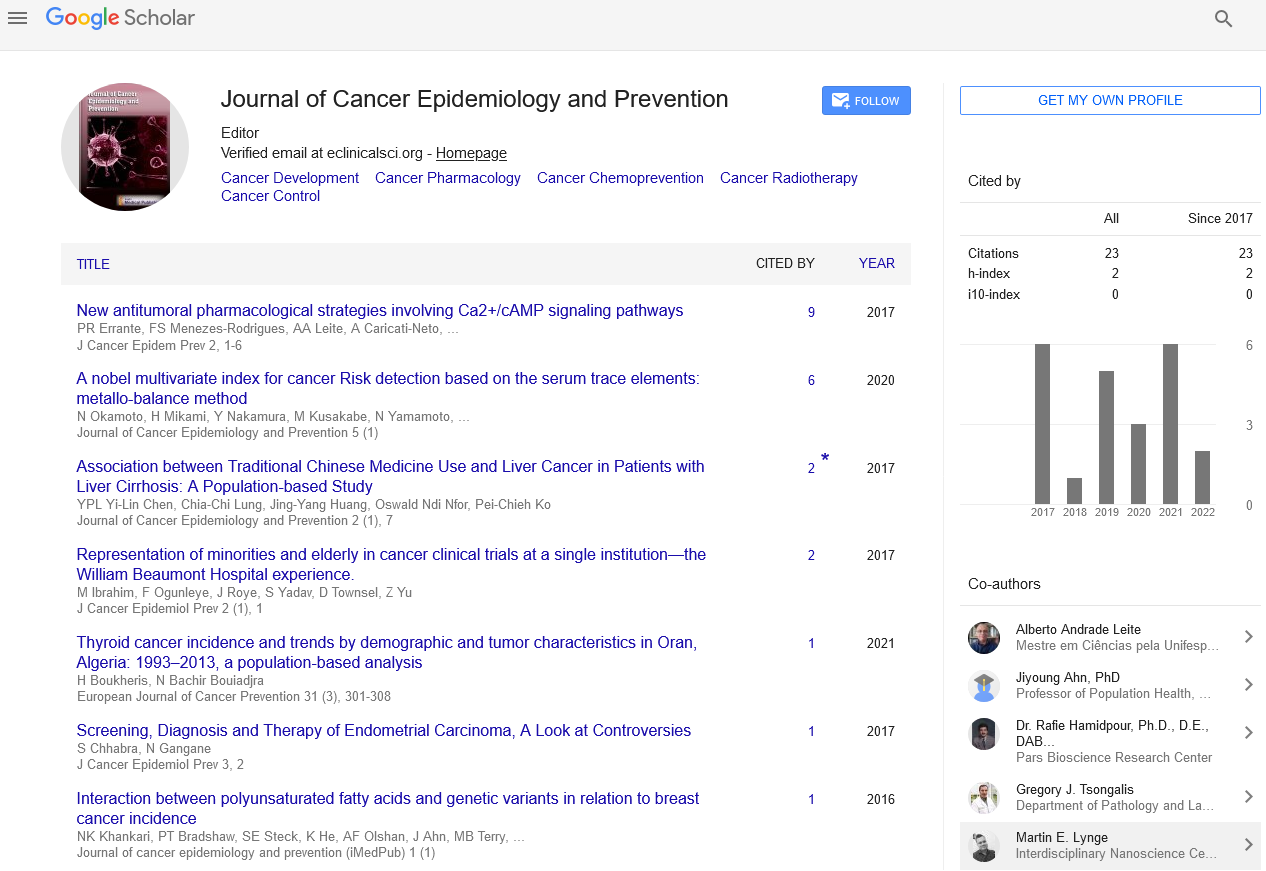Commentary - (2025) Volume 10, Issue 1
Lung Cancer: Understanding the Menace Within
Aron Fin*
Department of Oncology, Indiana State University, USA
*Correspondence:
Aron Fin, Department of Oncology, Indiana State University,
USA,
Email:
Received: 19-Mar-2024, Manuscript No. IPJCEP-24-19252;
Editor assigned: 21-Mar-2024, Pre QC No. IPJCEP-24-19252 (PQ);
Reviewed: 04-Apr-2024, QC No. IPJCEP-24-19252;
Revised: 24-Mar-2025, Manuscript No. IPJCEP-24-19252 (R);
Published:
01-Apr-2025, DOI: 10.36648/ipjcep.10.1.44
Description
Lung cancer is one of the most prevalent and deadliest forms of cancer worldwide. It develops when cells in the lungs grow uncontrollably, often leading to the formation of tumors that can impair lung function and metastasize to other parts of the body. Understanding the causes, symptoms, diagnosis, and treatment options for lung cancer is crucial in combating this formidable disease.
Causes and risk factors: Several factors contribute to the development of lung cancer, with smoking being the leading cause. Tobacco smoke contains numerous carcinogens that damage the cells lining the lungs, triggering mutations that can lead to cancerous growth. Even secondhand smoke exposure increases the risk of lung cancer.
However, non-smokers can also develop lung cancer. Exposure to environmental pollutants such as radon, asbestos, and certain chemicals, as well as genetic predispositions, can all play a role in the onset of the disease.
Types of lung cancer: Lung cancer is broadly categorized into two main types: Non-Small Cell Lung Cancer (NSCLC) and Small Cell Lung Cancer (SCLC). NSCLC accounts for approximately 80-85% of lung cancer cases and includes subtypes such as adenocarcinoma, squamous cell carcinoma, and large cell carcinoma. SCLC, though less common, tends to grow and spread more rapidly than NSCLC.
Symptoms: Early-stage lung cancer often presents no noticeable symptoms, making it challenging to detect. As the disease progresses, however, individuals may experience: Persistent cough, chest pain, shortness of breath, wheezing, coughing up blood, fatigue, unexplained weight loss.
It's essential to consult a healthcare professional if any of these symptoms persist, especially for individuals with a history of smoking or other risk factors for lung cancer.
Diagnosis: Diagnosing lung cancer typically involves a combination of imaging tests, such as chest X-rays and CT scans, and tissue biopsies to confirm the presence of cancerous cells. Additionally, sputum cytology, where a sample of mucus coughed up from the lungs is examined under a microscope, may be performed to detect cancerous cells.
Treatment: Treatment options for lung cancer depend on several factors, including the type and stage of cancer, as well as the patient's overall health and preferences. Common treatment modalities include:
• Surgery: Surgical removal of the tumor and surrounding tissue is often recommended for early-stage lung cancer.
• Radiation therapy: High-energy X-rays or other forms of radiation are used to destroy cancer cells and shrink tumors.
• Chemotherapy: Powerful drugs are administered orally or intravenously to kill cancer cells or stop them from growing.
• Targeted therapy: Drugs that specifically target certain genetic mutations or proteins involved in cancer growth are used to treat some types of lung cancer.
• Immunotherapy: This treatment harnesses the body's immune system to identify and destroy cancer cells.
In many cases, a combination of these treatments is used to achieve the best possible outcome. Palliative care may also be provided to alleviate symptoms and improve the quality of life for patients with advanced lung cancer.
Prevention: While not all cases of lung cancer are preventable, there are steps individuals can take to reduce their risk:
• Avoid smoking: Quitting smoking and avoiding exposure to secondhand smoke are the most effective ways to prevent lung cancer.
• Limit exposure to carcinogens: Minimize exposure to environmental pollutants, such as radon and asbestos, whenever possible.
• Eat a healthy diet: Consuming a diet rich in fruits, vegetables, and whole grains while limiting processed foods and red meat may help reduce the risk of cancer.
• Exercise regularly: Engaging in regular physical activity can improve overall health and may reduce the risk of lung cancer.
Conclusion
Lung cancer remains a significant public health concern
worldwide, but advances in early detection and treatment
have improved outcomes for many patients. Increased
awareness of risk factors, symptoms, and screening options
can help detect lung cancer at earlier stages when it is more
treatable. By adopting healthy lifestyle choices and avoiding
tobacco smoke and other known carcinogens, individuals can
take proactive steps to reduce their risk of developing this
deadly disease.
Citation: Fin A (2025) Lung Cancer: Understanding the Menace Within. Am J Cancer Epidemiol Prev. 10:44.
Copyright: © 2025 Fin A. This is an open-access article distributed under the terms of the Creative Commons Attribution License,
which permits unrestricted use, distribution, and reproduction in any medium, provided the original author and source are
credited.

